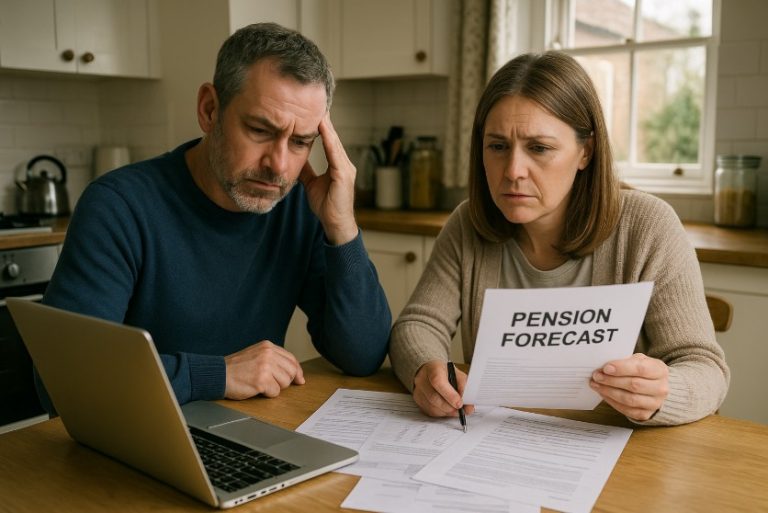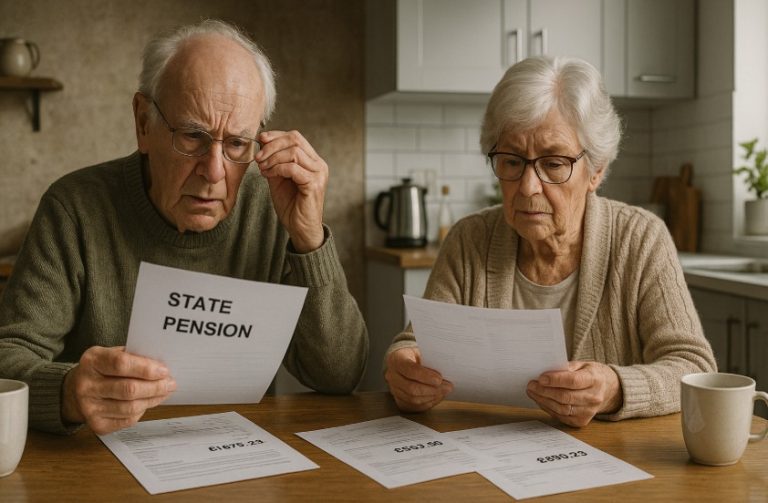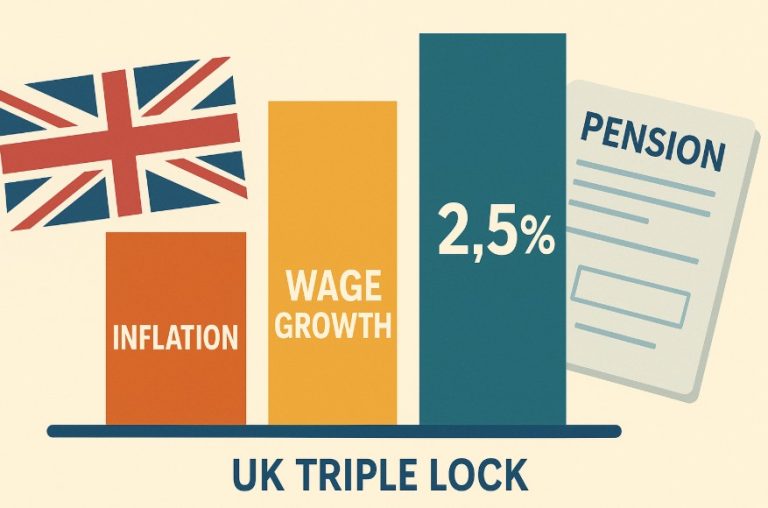The UK’s tax system is catching thousands of older workers in a little-known rule that imposes an effective 60% tax rate on part of their income.
This so-called state pension tax trap has become a growing concern among high-earning pensioners, as frozen thresholds and rising state pension income tip more individuals over the £100,000 mark.
In the 2024/25 tax year, nearly 80,000 people aged 66 and over have fallen into this trap. With the government maintaining the freeze on income tax bands until at least 2028/29, even more pensioners could face unexpectedly high tax bills if they continue working while receiving their state pension.
This article breaks down how the trap works, who is at risk, and how it can potentially be avoided.
What Is the State Pension Tax Trap and How Does It Work?
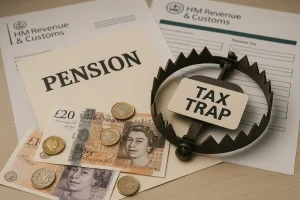
The state pension tax trap is the result of an overlap between increasing pensioner incomes and a quirk in the UK’s tax system specifically, the tapering of the personal allowance.
In the UK, individuals are entitled to a personal allowance, currently set at £12,570. This is the amount of income you can earn before you begin paying income tax.
However, once your income exceeds £100,000, your personal allowance is reduced by £1 for every £2 earned above that threshold. By the time income reaches £125,140, the personal allowance is entirely withdrawn.
The impact of this tapering is that any income falling between £100,000 and £125,140 is taxed at an effective marginal rate of 60%.
This is because you are taxed not only on the actual earnings in that band at 40%, but also on the additional tax created by the loss of your personal allowance.
This tax structure is not immediately obvious to most taxpayers. It is a consequence of how tax relief and band thresholds interact, and is not clearly communicated in HMRC documentation.
When state pensioners continue to work or draw income from multiple sources, they may unknowingly cross the £100,000 threshold and lose their tax-free allowance, triggering significantly higher taxes.
The problem is exacerbated by the fact that the state pension is automatically paid out without tax being deducted at source. This can result in underpaid tax, which is later claimed by HMRC through tax code adjustments or direct demands.
Why Are More State Pensioners Being Caught by This Tax Rule?
In the 2024/25 financial year, data shows that approximately 77,000 individuals aged 66 and above fell into the 60% tax trap. This number is projected to grow in coming years, primarily due to four key trends:
- The growth of the older workforce: Many pensioners are working well beyond state pension age. Some continue full-time employment; others consult or operate businesses. This additional income, when combined with the state pension, can easily exceed £100,000.
- Annual increases in the state pension: The triple lock policy has boosted the annual state pension amount significantly over recent years. In 2024/25, the full new state pension is over £11,500 per year. Even modest earnings added to this can push total income over the taper threshold.
- Frozen tax bands and allowances: The personal allowance and higher rate threshold have remained frozen since 2021, despite inflation. This fiscal drag means more people move into higher tax bands without any real increase in their spending power.
- Inflationary wage increases: Increases in salaries to keep up with the cost of living can inadvertently push older workers over the critical £100,000 mark.
Craig Rickman, pensions expert at Interactive Investor, highlighted the challenge:
“The 60% tax trap has a punishing effect on older professionals who want to keep working. It can discourage productivity and lead many to reduce hours or retire early simply to avoid tax losses.”
How Does HMRC’s Rule Quirk Penalise Older High Earners?

Older earners who continue to work after receiving their state pension often find themselves in a complex tax position. The state pension, although taxable, is not taxed at source.
This means HMRC expects the tax due to be recovered through other income sources using PAYE or via Self Assessment.
The key issue is when the combined total income from various sources employment, consultancy, private pensions, savings interest, and the state pension crosses the £100,000 threshold. The personal allowance begins to taper, increasing the effective tax rate.
Consider this example scenario:
| Source of Income | Annual Amount |
| Salary from part-time consultancy | £93,500 |
| State pension | £11,600 |
| Private pension drawdown | £3,000 |
| Total Taxable Income | £108,100 |
- Personal allowance starts reducing after £100,000
- The individual loses £4,050 of the £12,570 allowance
- This £4,050 is taxed at 40%, adding £1,620 in extra tax
- Plus, the income above £100,000 (£8,100) is taxed at 40% (£3,240)
Total tax on the £8,100 income increase = £4,860, an effective rate of 60%
The system penalises those with multiple modest income sources that push them into this trap. Many older workers are unaware that the state pension adds to this calculation, increasing their exposure.
What Can Be Done to Avoid Falling Into the 60% Tax Trap?
Avoiding this trap requires forward-looking financial planning and a clear understanding of your income sources. For individuals nearing or exceeding the £100,000 mark, the following strategies can be effective:
- Make personal pension contributions: Contributions to a private pension (like a SIPP) reduce your taxable income. For example, contributing £10,000 could bring a £110,000 income down to £100,000, reinstating your full personal allowance and resulting in thousands saved in tax.
- Use salary sacrifice schemes: Redirecting part of your salary into a pension or benefits package can reduce taxable income and lower National Insurance liabilities.
- Delay pension drawdowns: If you do not need immediate access to private pension funds, delaying withdrawals can keep your income under control.
- Ensure you report contributions accurately: Pension contributions to SIPPs and other schemes must be included in Self Assessment returns to receive full tax relief. While the 20% basic relief is added automatically, higher rate relief must be claimed manually.
Here’s an illustration of how a pension contribution can affect overall tax liability:
| Scenario | Without Pension Contribution | With £10,000 Contribution |
| Total income | £110,000 | £110,000 |
| Taxable income after contribution | £110,000 | £100,000 |
| Personal allowance | £7,570 | £12,570 |
| Tax saving from restored allowance | £2,000+ | Significant |
| Effective tax rate | Up to 60% | 40% or less |
This strategy not only reduces tax but also boosts long-term pension savings, making it a highly efficient solution for those affected by the trap.
How Long Will the Income Tax Freeze Last and What Does It Mean for Pensioners?
The UK government has confirmed that the personal allowance and tax thresholds will remain frozen until at least the 2028/29 tax year.
This policy, known as fiscal drag, gradually increases the tax burden on individuals whose nominal income rises, even if their real purchasing power remains the same.
The taper threshold of £100,000 has not been adjusted for over a decade. If it had increased in line with inflation, the threshold today would be closer to £155,000.
The effect is clear: more people are being pulled into higher effective tax rates, including pensioners who may only have marginal income above the limit.
This freeze creates an increasingly regressive system. As state pensions rise each year due to the triple lock, more individuals are brought into the tapering zone without ever having expected it. Those on fixed or modest incomes may now be required to file tax returns, even if their lifestyles haven’t changed.
The ongoing freeze may also have indirect effects, such as discouraging older people from continuing to work. Many pensioners may find that reducing their hours or retiring completely results in a higher net income after tax than continuing full-time work.
How Could This Tax Trap Affect the UK Workforce and Economy?

The 60% marginal tax rate applies only to a small income band, but its implications are wider than they first appear. As more older people are affected, the economic and social impact could be significant.
Firstly, the trap creates a disincentive to continue working, particularly among high-earning professionals approaching retirement. For some, earning more means keeping less of it after tax, which may lead to decisions to:
- Retire earlier than planned
- Reduce working hours
- Turn down consulting or freelance work
- Avoid pay rises or promotions
This behaviour results in a loss of experienced labour in sectors that are already facing shortages. NHS consultants, engineers, legal professionals, and other senior experts may choose to step away from the workforce due to poor tax efficiency.
There are also implications for government tax revenue. While the tapering rule increases tax collection in the short term, it can have a negative long-term impact if it encourages early retirement, reduces business activity, or deters older entrepreneurs from staying active.
Lastly, this policy has created complexity in the tax code, increasing the burden on taxpayers and HMRC alike. Many individuals in this income range are required to complete Self Assessment returns and seek financial advice, even if their financial affairs are otherwise straightforward.
What Steps Should You Take If You’re Nearing the Income Threshold?
If you are approaching a total annual income of £100,000 or more, especially after receiving the state pension, it is vital to take early action. Practical steps include:
- Calculate total annual income: Include employment, private pensions, rental income, savings interest, and state pension.
- Use HMRC’s online tools: These can help estimate your income tax liability. Alternatively, consult a tax advisor who understands the complexities of retirement income.
- Review pension drawdowns: Consider whether delaying or reducing private pension withdrawals would bring income under the threshold.
- Monitor changes annually: Recalculate income and tax bands each year to understand how frozen thresholds may affect you going forward.
- Check your tax code: Ensure HMRC is properly accounting for your state pension in your PAYE code to avoid large backdated tax bills.
Even if you are currently under the £100,000 threshold, it’s wise to understand how close you are, and how quickly inflation or a pension rise could tip you over.
Could Pension Tax Reform Help Solve This Problem?
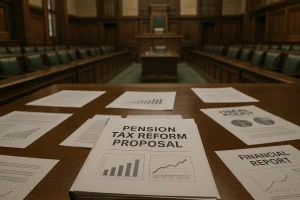
There is growing pressure on the UK government to reform aspects of the income tax system, particularly those that create unintended consequences such as the 60% trap.
Some policy experts have proposed:
- Raising the taper threshold in line with inflation: This would reduce the number of individuals impacted by fiscal drag and restore fairness to the system.
- Simplifying the taper mechanism: The gradual withdrawal of personal allowance is complex and hard to understand. A flat removal or phased withdrawal over a broader range could ease the burden.
- Rethinking state pension taxation: Since the state pension is automatically paid without tax being withheld, some propose aligning it more closely with PAYE or offering clearer guidance.
Although no firm government proposals have been announced, the growing number of affected individuals, and increasing media coverage, make tax reform a likely focus of future fiscal policy debates.
Conclusion
The state pension tax trap is an unintended consequence of income tax rules that disproportionately affect high-earning pensioners, especially those choosing to work later in life. With thresholds frozen and inflation pushing up earnings, more individuals are falling into the trap each year.
Understanding how the 60% effective tax rate works, planning ahead, and using available reliefs can help reduce your exposure.
For those approaching the £100,000 mark, strategic financial planning could save thousands in taxes—and preserve more of your retirement income.
Frequently Asked Questions
How can pensioners avoid the 60% tax rate?
Pensioners can reduce taxable income through pension contributions, salary sacrifice, or careful income management. Consulting a financial advisor is recommended.
Why does the personal allowance taper create such a high tax rate?
Because every £1 of income over £100,000 removes £0.50 of tax-free income, it creates a combined marginal tax rate of 60% within the taper band.
What income sources are counted toward the £100,000 threshold?
All taxable income is included employment income, rental income, private pensions, and the state pension.
Is state pension income always taxable?
Yes. While it is paid gross, the state pension is fully taxable and is counted toward your annual income.
How can I use pension contributions to reduce my taxable income?
Contributing to a pension (e.g. SIPP) can lower your taxable income below £100,000 and potentially restore your personal allowance.
Are tax thresholds likely to change soon?
Currently, tax thresholds are frozen until at least 2028/29. Any changes will likely depend on future government fiscal policy.
What are the long-term risks of this tax trap for retirees?
The trap may discourage older workers from staying in the workforce and result in lower disposable income, reducing retirement quality for some pensioners.

